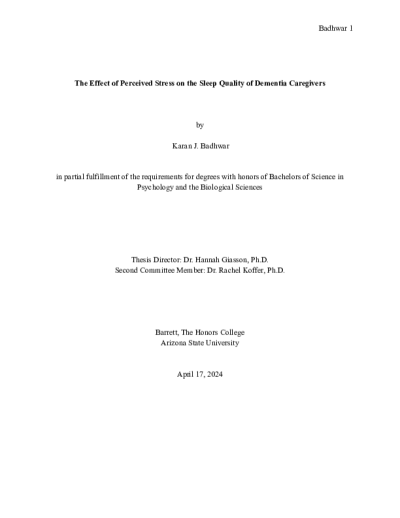Filtering by
- Creators: School of International Letters and Cultures
- Creators: Aiken, Leona





Brave Bears was a Barrett creative project that operated under local non-profit organizations, Amanda Hope Rainbow Angels and Arizona Women’s Recovery Center. Amanda Hope Rainbow Angels provides support and education for children fighting cancer and their families. Arizona Women’s Recovery Center provides rehabilitation programs for women fighting substance abuse and housing for the women and their children. The Brave Bears Project was focused on helping children in these situations cope with the trauma they are experiencing. The children received a teddy bear, which is a transitional object. In addition, a clay pendant with the word, “brave” pressed into it was tied around the bear’s neck with a ribbon. A poem of explanation and encouragement was also included.<br/><br/>The teddy bear provided comfort to children experiencing emotionally distressing situations as they receive treatment for their illness or as their mom undergoes rehabilitation. This can be in the form of holding the teddy bear when they feel frightened, anxious, lonely or depressed. The “brave” pendant and poem seek to encourage them and acknowledge their trauma and ability to persevere.
South Asian students are known for having immense pressure on them due to parental expectation and oftentimes that stress can present in psychosomatic symptoms. This investigation aimed to better understand the physical presentations of stress and how South Asians compare to their white peers. An online study was conducted with both South Asian (n = 15) and White (n = 58) individuals that use the Perceived Stress Scale and the New York State United Teachers physical stress assessment to understand the differences in stress. It was found that South Asians have a higher average perceived stress core of 25 versus 20 for whites and experience headaches, sore neck, an overall feeling of worry and anxiety, and diarrhea more frequently than their white counterparts. This suggests that South Asians may in fact have more psychosomatic manifestations of stress. It is posited that this is due to South Asian students not having an adequate outlet in which they can express negative emotions.


Psychological stress is thought to arise from appraisal processes that ascribe threat-related meaning to experiences that tax or exceed our coping ability (Gianaros & Wager, 2015). Gianaros & Wager (2015) found that there is a positive correlation between brain-body pathways which link psychological stress and physical health. The stress response includes sympathetic nervous system activation, which is equitable to the fight-or-flight response and increases heart rate and blood pressure (Al’Absi et al., 2016). Stress affects multiple physiological systems including the immune and reproductive systems. Cardiovascular disease is one of the main risks of prolonged stress, with research indicated an association between stress and a significant increased risk of cardiovascular disease (Backe et al., 2012; Rosengren et al., 2004). With cardiovascular disease being a main contributor to illness and death in the United States, it is crucial that the disease is prevented or treated.

This narrative literature review explores how perceived stress affects sleep quality in dementia caregivers by examining various factors. Ten studies from 2013 to 2022 across four continents were analyzed, focusing on caregiver stress levels, sleep quality, caregiver burden, and depression. Higher stress levels were linked to poorer sleep quality, alongside factors like emotional distress and disrupted sleep patterns. The findings highlight the importance of targeted interventions to reduce stress and improve sleep quality among dementia caregivers, suggesting the need for longitudinal and empirical studies with standardized measures for a better understanding.